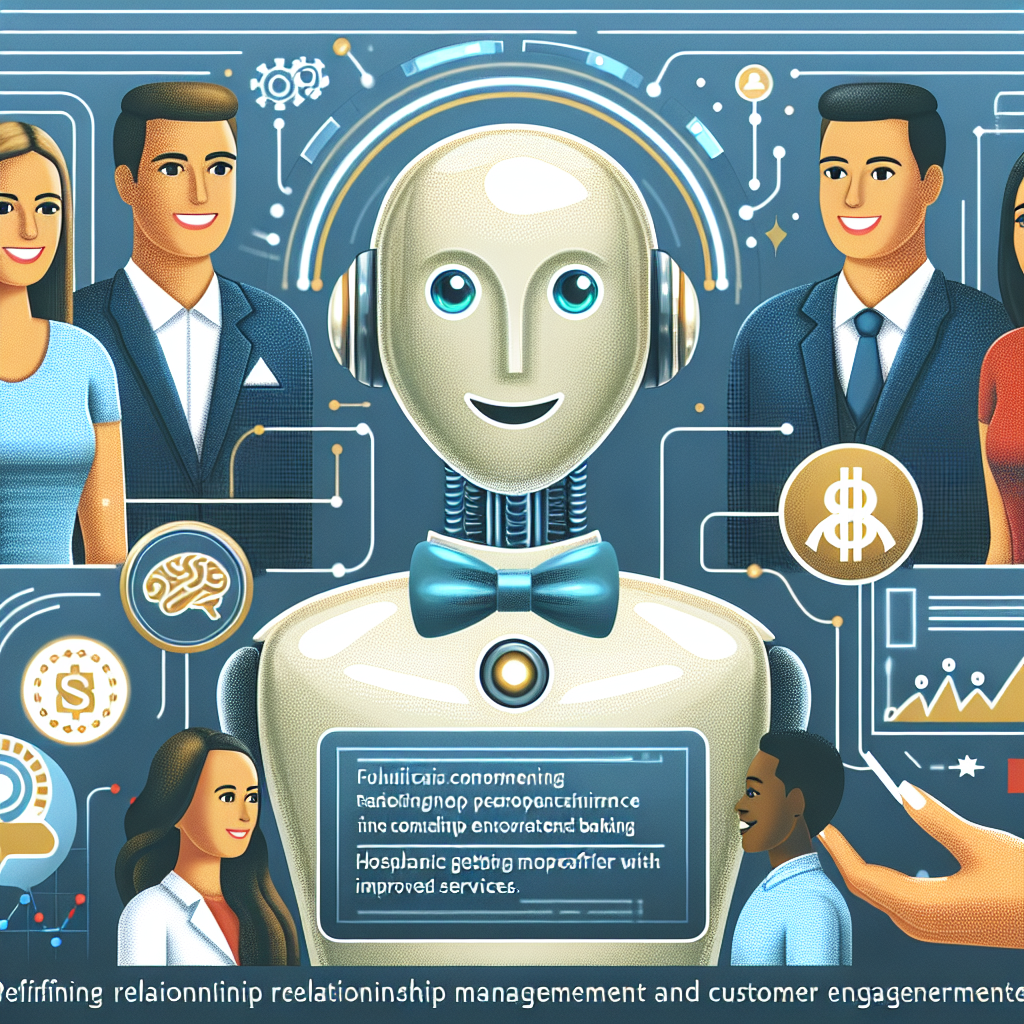Artificial Intelligence (AI) is revolutionizing the way banks engage with their customers and manage relationships. In an increasingly digital world, where customers expect personalized and seamless experiences, AI is becoming a critical tool for banks to stay competitive and meet the evolving needs of their customers.
AI-powered tools and technologies are enabling banks to better understand their customers, anticipate their needs, and deliver personalized experiences at scale. From chatbots and virtual assistants to predictive analytics and machine learning algorithms, AI is redefining relationship management and customer engagement in banking in the following ways:
1. Personalized Customer Interactions: AI-powered chatbots and virtual assistants are transforming the way banks interact with their customers. These intelligent systems can understand natural language, interpret customer queries, and provide personalized responses in real-time. This not only enhances the customer experience but also allows banks to engage with customers on a more personal level, building trust and loyalty.
2. Predictive Analytics: AI algorithms can analyze vast amounts of customer data to identify patterns, trends, and insights that can help banks understand customer behavior and preferences. By leveraging predictive analytics, banks can anticipate customer needs, recommend relevant products and services, and proactively address potential issues before they arise.
3. Customer Segmentation: AI can segment customers based on their behavior, preferences, and demographics, allowing banks to tailor their marketing and communication strategies to different customer segments. By delivering targeted messages and offers to specific customer segments, banks can increase customer engagement and drive conversions.
4. Fraud Detection: AI-powered fraud detection systems can analyze transaction data in real-time to identify suspicious activities and prevent fraudulent transactions. By leveraging machine learning algorithms, banks can detect patterns of fraudulent behavior and take proactive measures to protect their customers and minimize financial losses.
5. Automated Customer Service: AI-powered chatbots and virtual assistants can handle routine customer service inquiries, such as account balances, transaction history, and loan applications, without the need for human intervention. This not only reduces the burden on customer service agents but also provides customers with instant and convenient access to information and support.
6. Cross-Selling and Upselling: AI can analyze customer data to identify opportunities for cross-selling and upselling, enabling banks to recommend relevant products and services to customers based on their individual needs and preferences. By leveraging AI-powered recommendation engines, banks can increase revenue and deepen customer relationships.
7. Risk Management: AI algorithms can assess credit risk, detect anomalies in transaction data, and predict potential defaults, helping banks make more informed decisions and mitigate risks. By leveraging AI for risk management, banks can optimize their lending practices, reduce losses, and improve overall financial performance.
8. Regulatory Compliance: AI-powered tools can help banks comply with regulatory requirements by automating compliance processes, monitoring transactions for suspicious activities, and generating reports for regulatory authorities. By leveraging AI for regulatory compliance, banks can reduce the risk of fines and penalties and ensure adherence to legal and ethical standards.
In conclusion, AI is redefining relationship management and customer engagement in banking by enabling banks to deliver personalized experiences, anticipate customer needs, mitigate risks, and comply with regulatory requirements. As AI continues to advance, banks will need to invest in AI-powered technologies and strategies to stay competitive, meet customer expectations, and drive business growth.
FAQs:
1. What is AI and how is it used in banking?
AI stands for Artificial Intelligence, which refers to the simulation of human intelligence in machines that are programmed to think and learn like humans. In banking, AI is used to analyze customer data, predict customer behavior, personalize customer interactions, detect fraud, manage risks, and comply with regulatory requirements.
2. What are some examples of AI-powered tools used in banking?
Some examples of AI-powered tools used in banking include chatbots, virtual assistants, predictive analytics, machine learning algorithms, recommendation engines, fraud detection systems, and risk management tools.
3. How does AI improve customer engagement in banking?
AI improves customer engagement in banking by enabling banks to deliver personalized experiences, anticipate customer needs, provide instant support, recommend relevant products and services, and engage with customers on a more personal level.
4. What are the benefits of using AI in banking?
The benefits of using AI in banking include improved customer experiences, increased operational efficiency, reduced risks, enhanced fraud detection, better compliance with regulatory requirements, and increased revenue through cross-selling and upselling.
5. How can banks leverage AI to stay competitive?
Banks can leverage AI to stay competitive by investing in AI-powered technologies and strategies, analyzing customer data to gain insights, personalizing customer interactions, detecting fraud in real-time, managing risks effectively, and complying with regulatory requirements.
In conclusion, AI is redefining relationship management and customer engagement in banking by enabling banks to deliver personalized experiences, anticipate customer needs, mitigate risks, and comply with regulatory requirements. By leveraging AI-powered tools and technologies, banks can stay competitive, meet customer expectations, and drive business growth in an increasingly digital world.

